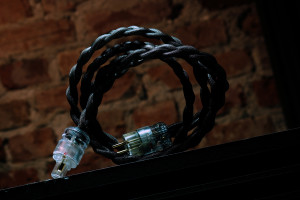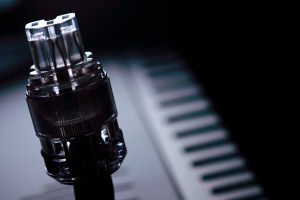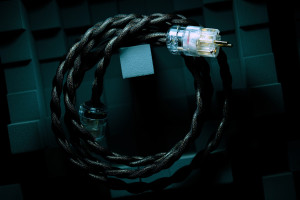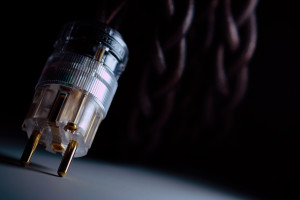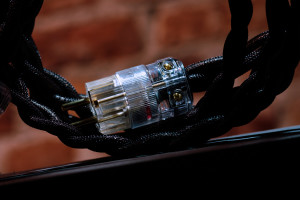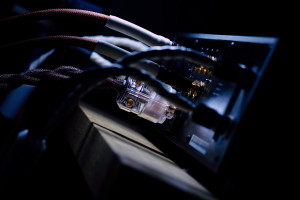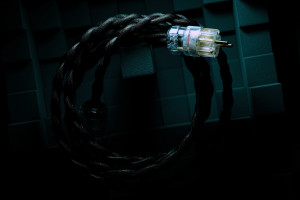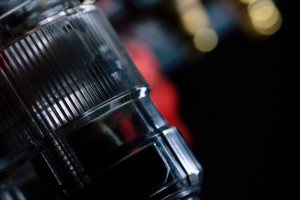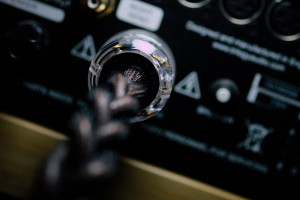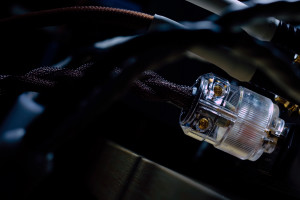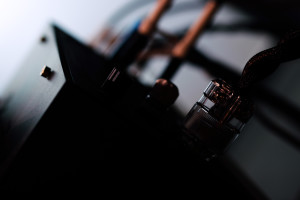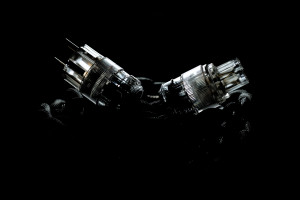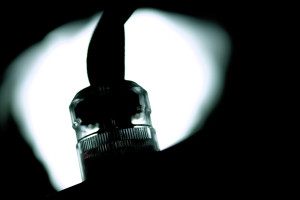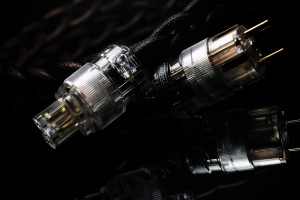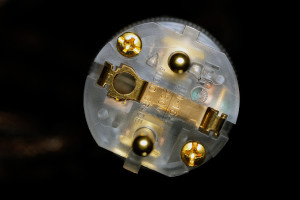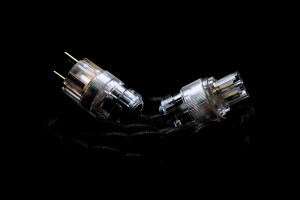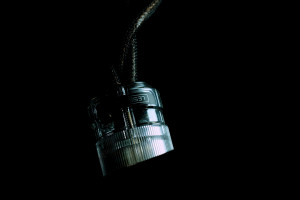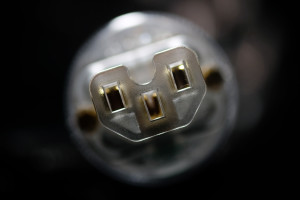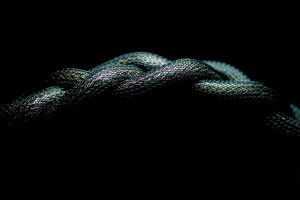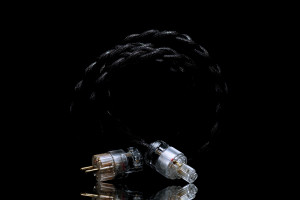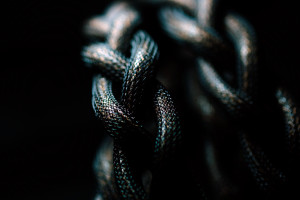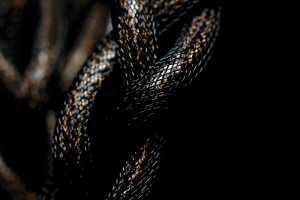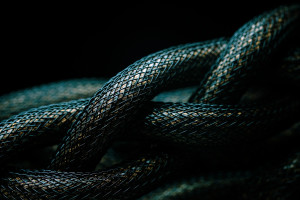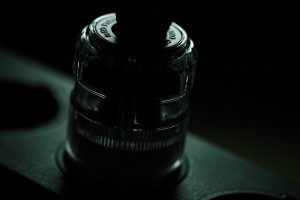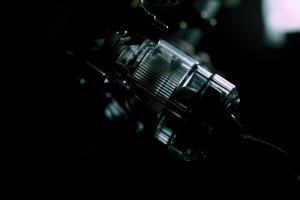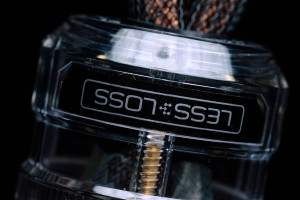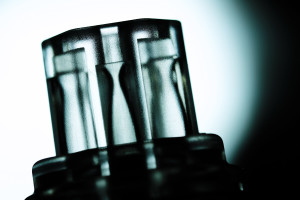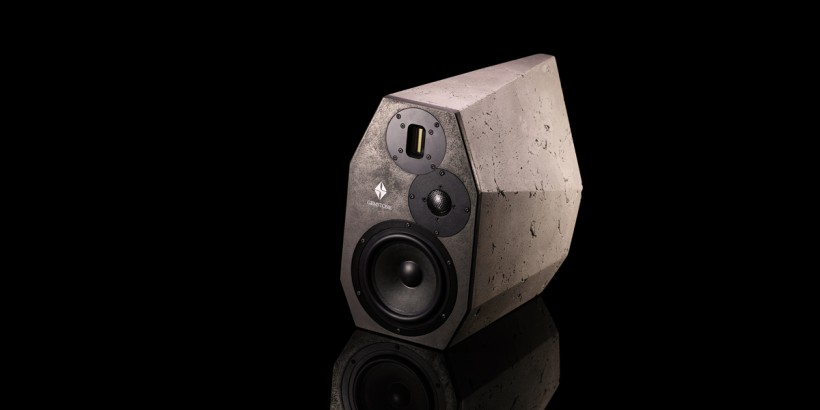Operational for more than a decade and known for low-noise cables, LessLoss is one of the hottest Lithuanian audio houses out there. The recently developed C-MARC tech is the reason behind this company’s complete cable overhaul. In order to properly familiarize with the new order, a compact package branded as LessLoss C-MARC Power Cable was sent my way. Enjoy!
Introduction
Even though this is the very first LessLoss review published at HifiKnights.com, this company isn’t unknown to yours truly, on the contrary. And if audio is your hobby, it’s highly likely that you’ve heard of it already elsewhere. In my case the Lithuanian adventure started many years ago as a rather personal affair. Long before this site came to be, I already knew what kind of content I was after. Local printed press taught me to pay attention to details, whereas Srajan’s witty storytelling proved me that professional audio publications can be properly informational, utmost interesting and entertaining at the same time. But audio hardware showcased on black background, in low key fashion and complimented via subtle mirror-like effect underneath I saw for the first time at the LessLoss site many springs ago. One particular photo of this company’s DFPC power cable with its gorgeously lit red plugs and thick braiding was all it took. Back then I understood fully that this was it. Needless to say, I’ve been pursuing this photo style ever since, not to mention LessLoss as the source of my inspiration at some point would be a crime and I simply can’t think of an opportunity any better to do so than now.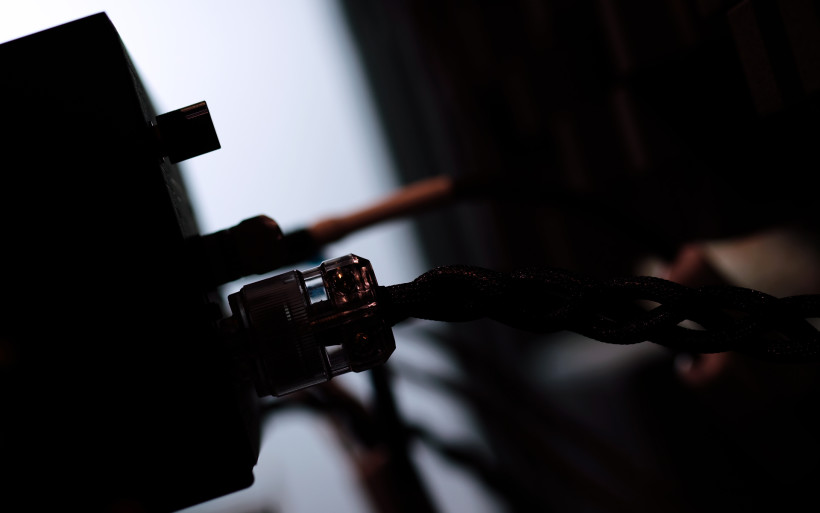 Established more than a decade ago, LessLoss isn’t a newcomer and links to 100+ reviews found on its site prove the point rather well. This operation’s HQ is located in Lithuania’s second-biggest city of Kaunas, whereas its business model is based on direct sales to keep prices as sane as possible. Now let’s add proprietary and oftentimes unusual solutions, a number of vastly different products, generous overall transparency and presto, full attention is given. To be perfectly clear, LessLoss got me very much intrigued years earlier and Srajan’s C-MARC loom review published here pushed this scribe to finally reach out. This company’s main man – Louis Motek – answered my call and shortly past a pleasant chat the game was afoot.
Established more than a decade ago, LessLoss isn’t a newcomer and links to 100+ reviews found on its site prove the point rather well. This operation’s HQ is located in Lithuania’s second-biggest city of Kaunas, whereas its business model is based on direct sales to keep prices as sane as possible. Now let’s add proprietary and oftentimes unusual solutions, a number of vastly different products, generous overall transparency and presto, full attention is given. To be perfectly clear, LessLoss got me very much intrigued years earlier and Srajan’s C-MARC loom review published here pushed this scribe to finally reach out. This company’s main man – Louis Motek – answered my call and shortly past a pleasant chat the game was afoot. When asked about his background and how his operation came to be, Louis provided me with thorough information about his past. This soft-spoken gent is the son of an organist and choir singer, his two brothers played violin and his sister was into classical guitar, whereas his uncle and grandmother were a professional pianist/organist and opera soloist respectively. At the age of six Louis performed his first piano recital, he successfully advanced through the books of the Suzuki cello school shortly after and as a twelve-year-old boy got himself familiar with saxophone as well. Louis has played in big-bands, symphony orchestras, ethnic music ensembles, has sung in mixed choirs, composed his own popular and academic music and was a student of musicology. At one point he had mastered at least a C major scale on all of the instruments encountered in any of the above-mentioned groups. Put shortly, his musical experience can be safely described as vast. With such a family and early interests things couldn’t have been any different, could they?
When asked about his background and how his operation came to be, Louis provided me with thorough information about his past. This soft-spoken gent is the son of an organist and choir singer, his two brothers played violin and his sister was into classical guitar, whereas his uncle and grandmother were a professional pianist/organist and opera soloist respectively. At the age of six Louis performed his first piano recital, he successfully advanced through the books of the Suzuki cello school shortly after and as a twelve-year-old boy got himself familiar with saxophone as well. Louis has played in big-bands, symphony orchestras, ethnic music ensembles, has sung in mixed choirs, composed his own popular and academic music and was a student of musicology. At one point he had mastered at least a C major scale on all of the instruments encountered in any of the above-mentioned groups. Put shortly, his musical experience can be safely described as vast. With such a family and early interests things couldn’t have been any different, could they?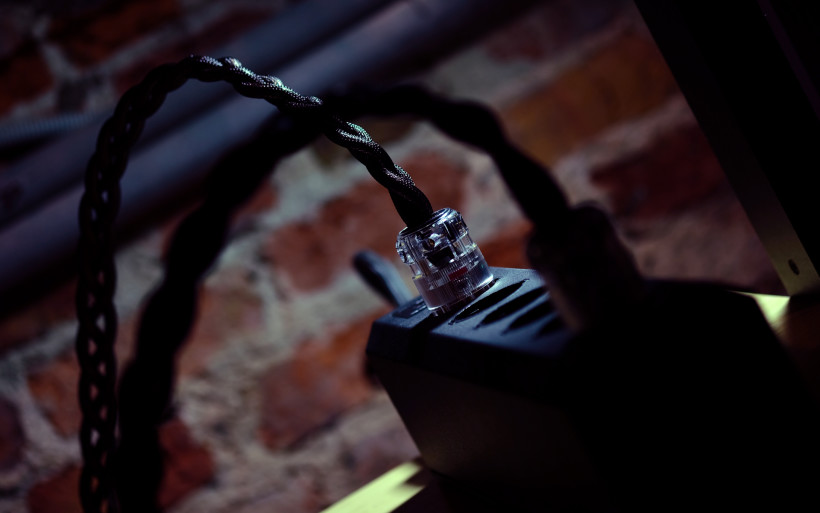 Louis also worked as a jeweler in New York City and has a decade long experience in a private Pro-Tools based recording studio. His interest in high end audio was born in this particular place and all of his musical talents eventually morphed into LessLoss as we know it. Some of components he developed back then (15+ years old designs) are still available. Louis informed me that anyone who knows him attests that these are mature solutions for a discerning audiophile. The man’s trilingual, he speaks and writes fluently in English, German and Lithuanian. His favorite things are those which are evident though unexplainable by mainstream science yet. If this sounds too nebulous to you, by all means feel free to take a look at his site as it’s as far from mysterious as it gets. Any naysayer will find a lot of pleasantly digestible content to dig into there.
Louis also worked as a jeweler in New York City and has a decade long experience in a private Pro-Tools based recording studio. His interest in high end audio was born in this particular place and all of his musical talents eventually morphed into LessLoss as we know it. Some of components he developed back then (15+ years old designs) are still available. Louis informed me that anyone who knows him attests that these are mature solutions for a discerning audiophile. The man’s trilingual, he speaks and writes fluently in English, German and Lithuanian. His favorite things are those which are evident though unexplainable by mainstream science yet. If this sounds too nebulous to you, by all means feel free to take a look at his site as it’s as far from mysterious as it gets. Any naysayer will find a lot of pleasantly digestible content to dig into there.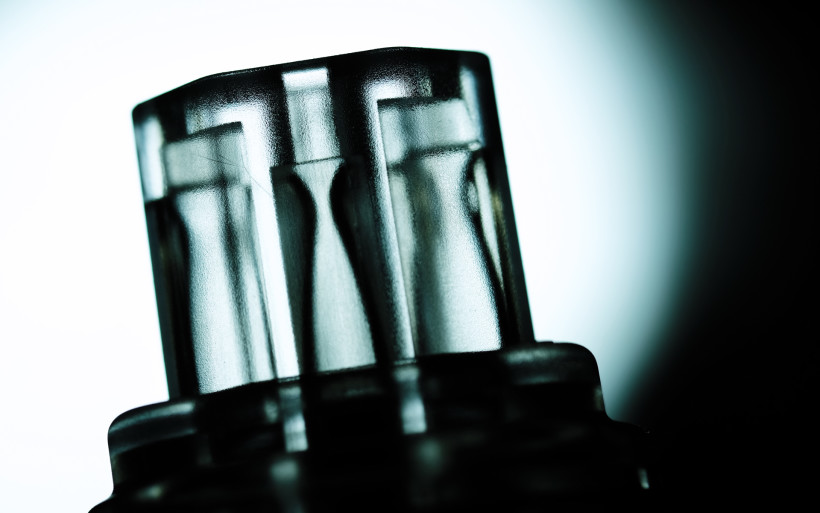 As to why our man does what he does, it’s best to quote him: “Every audiophile knows that at certain times, late at night, at around 3 AM, something happens to the electrical supply in the city in which they live. The sound becomes magnificent. There is no distortion. Everything clicks into place. It is some sort of audio nirvana. You can experience this perhaps 2 or 3 times a year, at best. Audiophiles spend vast quantities of time remembering this experience and even more time attempting (and failing) to recreate it. The experience is haunting and elusive. It only happens late at night and very rarely. This is what I am selling. I am selling this 3 AM sound for your enjoyment all day long, every day.”
As to why our man does what he does, it’s best to quote him: “Every audiophile knows that at certain times, late at night, at around 3 AM, something happens to the electrical supply in the city in which they live. The sound becomes magnificent. There is no distortion. Everything clicks into place. It is some sort of audio nirvana. You can experience this perhaps 2 or 3 times a year, at best. Audiophiles spend vast quantities of time remembering this experience and even more time attempting (and failing) to recreate it. The experience is haunting and elusive. It only happens late at night and very rarely. This is what I am selling. I am selling this 3 AM sound for your enjoyment all day long, every day.”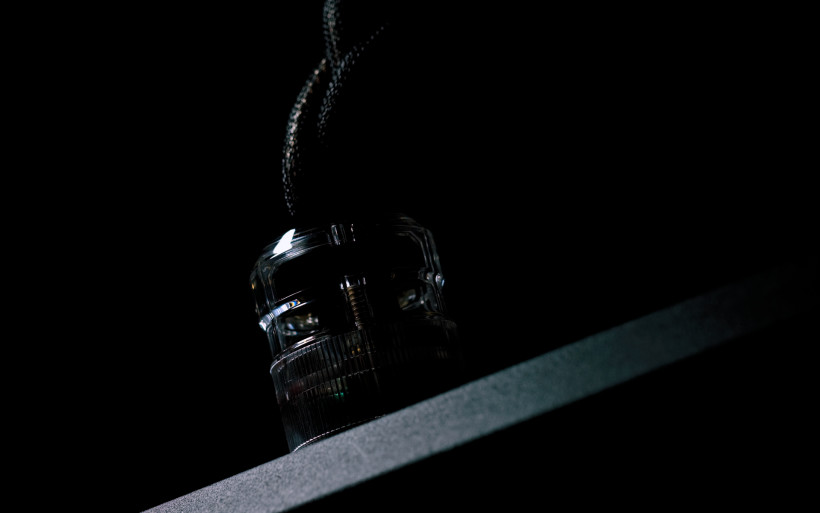 Not convinced yet? To be fair, early on I’d be at least mildly skeptical as well. But the facts are as follows; LessLoss has been around for years, it isn’t going anywhere, its impressively transparent portfolio in large part both reviewers and regular consumers hold in high regard, many items they labeled as generous on price-to-performance count and all this can’t be mere struck of Lady Luck. It’s safe to say that all these checkboxes ticked off and personal curiosity eventually led to this report. Also the word is that Sven Boenicke of Boenicke Audio is going to include some of LessLoss tech in his upcoming goods, which additionally incentivized yours truly to take a closer look at this Lithuanian operation. And lastly, Louis was very communicative and responsive enough to set a new reply record as most of his messages arrived within hour and some after mere minutes. Several days past our first convo, two C-MARC power cords were on their way to my place directly.
Not convinced yet? To be fair, early on I’d be at least mildly skeptical as well. But the facts are as follows; LessLoss has been around for years, it isn’t going anywhere, its impressively transparent portfolio in large part both reviewers and regular consumers hold in high regard, many items they labeled as generous on price-to-performance count and all this can’t be mere struck of Lady Luck. It’s safe to say that all these checkboxes ticked off and personal curiosity eventually led to this report. Also the word is that Sven Boenicke of Boenicke Audio is going to include some of LessLoss tech in his upcoming goods, which additionally incentivized yours truly to take a closer look at this Lithuanian operation. And lastly, Louis was very communicative and responsive enough to set a new reply record as most of his messages arrived within hour and some after mere minutes. Several days past our first convo, two C-MARC power cords were on their way to my place directly.
Portfolio
Let’s take a closer look at what LessLoss has to offer first. Various cables have always been this company’s bread and butter, although these items share space with far different products these days. With $90’000+ on its price tag, Laminar Streamer is the most expensive LessLoss hardware to date and by far. This directly driven audiophile SD card player is nothing short of a PoC case (a Proof of Concept), a one-off machine built to make a statement and nothing like it exists as far as yours truly is aware. This gorgeously minimalist audio furniture I’ve seen only once in Munich, in a room full of people and surrounded via electronics I’ve never heard at my place, thus I had no way of finding out what it did sound wise. What I do know is that this platform not only handles SD carriers via its own short yet lightning-fast code immune to any compatibility issues, but is also free from lag, buffering, any moving parts and PC related components on top of that. The last bit is utmost important as the initial idea behind Laminar Streamer was digital extremism as free from any excess and noisy components as possible. No WiFi, Ethernet, fancy displays or even RC. If all these things float your boat and financials are of no issue, this machine can be ordered with 3-5 months lead time.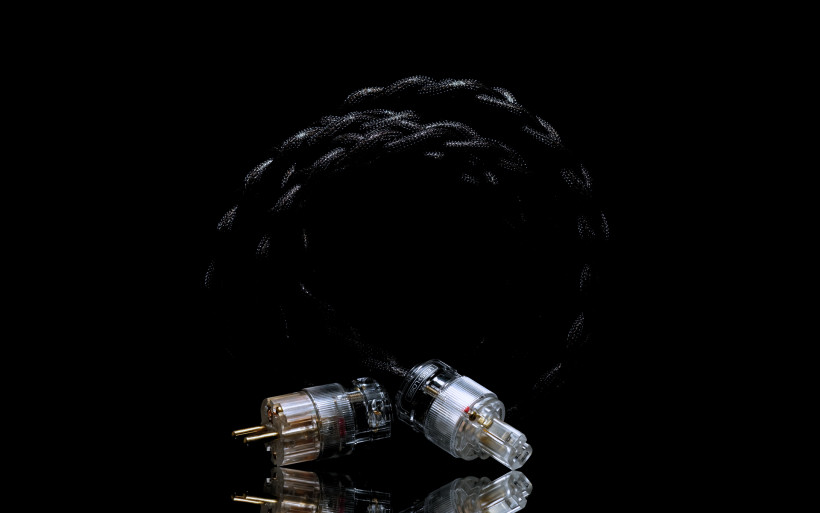 Here it’s worth introducing the other LessLoss gent – Vilmantas ‘Vil’ Duda. He’s the one largely responsible for the Laminar Streamer project. The man grew up in Lithuania and considers his homeland to be located in-between East and West also mentally, which translates to awareness of one’s own ideas and dreams plus untiring work ethic and educational drive. This unique mixture formed Vil’s character and is also something he’s proud of.
Here it’s worth introducing the other LessLoss gent – Vilmantas ‘Vil’ Duda. He’s the one largely responsible for the Laminar Streamer project. The man grew up in Lithuania and considers his homeland to be located in-between East and West also mentally, which translates to awareness of one’s own ideas and dreams plus untiring work ethic and educational drive. This unique mixture formed Vil’s character and is also something he’s proud of.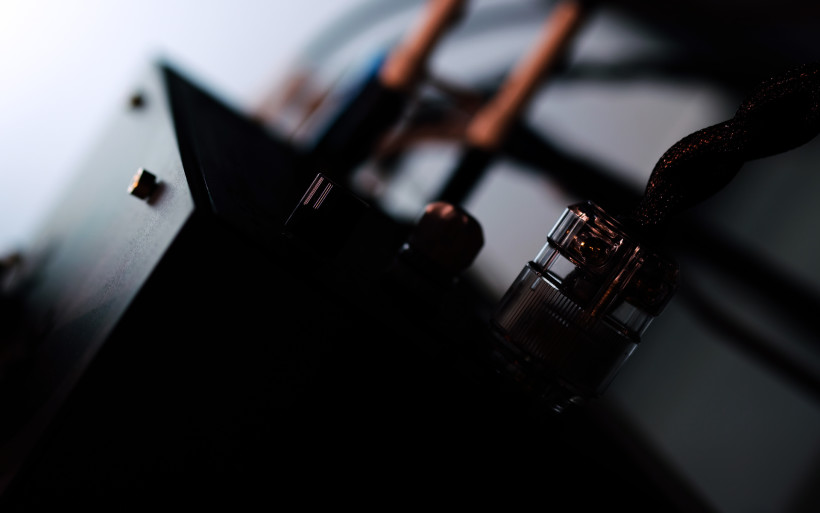 Vil holds a degree in electrical engineering, has been active in audio for his entire conscious life and has been up to date with all computer audio related developments since day one. To upgrade the latest affordable tech in order to outdo far pricier offerings has been our man’s aim for years and presumably quite the hobby too as he actually takes greater joy in the creation process itself than prolonged listenings to his own machines. Currently he works on a dream system for his private use. He’s into phase-perfect digital filtering algorithms and their potential in an ideal crossover system.
Vil holds a degree in electrical engineering, has been active in audio for his entire conscious life and has been up to date with all computer audio related developments since day one. To upgrade the latest affordable tech in order to outdo far pricier offerings has been our man’s aim for years and presumably quite the hobby too as he actually takes greater joy in the creation process itself than prolonged listenings to his own machines. Currently he works on a dream system for his private use. He’s into phase-perfect digital filtering algorithms and their potential in an ideal crossover system.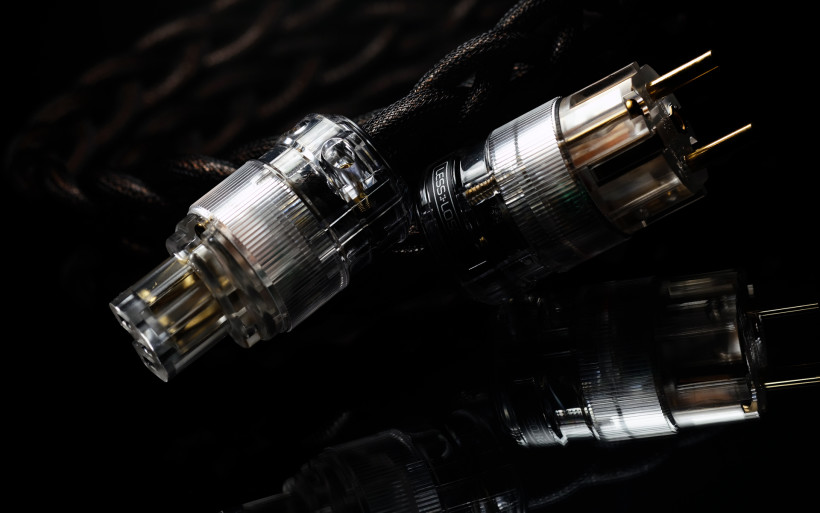 Vil worked as a sound technician in several recording studios in Lithuania and then moved to California for a year. As a computer specialist, he configured several machines used in many popular productions, i.e. hardware used by the keyboardist who co-wrote Michael Jackson’s “Thriller.” In spite of a lot to learn and see in Los Angeles and his talents full appreciated across the pond, Vil felt that his electro-technical expertise was not fully exploited. Configuring machines meant to be used by others as creative tools was Vil’s daily routine back then and eventually it lost with his own creativity. He’s been building custom DACs for more than two decades and now – as the master engineer at LessLoss – he can fully utilize all the knowledge gained over the years.
Vil worked as a sound technician in several recording studios in Lithuania and then moved to California for a year. As a computer specialist, he configured several machines used in many popular productions, i.e. hardware used by the keyboardist who co-wrote Michael Jackson’s “Thriller.” In spite of a lot to learn and see in Los Angeles and his talents full appreciated across the pond, Vil felt that his electro-technical expertise was not fully exploited. Configuring machines meant to be used by others as creative tools was Vil’s daily routine back then and eventually it lost with his own creativity. He’s been building custom DACs for more than two decades and now – as the master engineer at LessLoss – he can fully utilize all the knowledge gained over the years.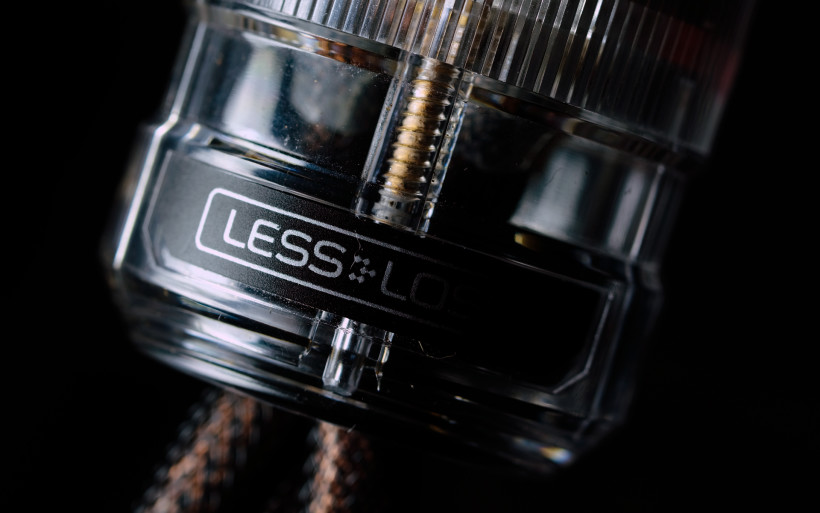 Moving on, LessLoss Echo’s End DAC is the next stop. This compact wooden box based on Soekris R-2R discrete D/A modules is available in three versions; Original ($5’342), Reference ($19’628) and Reference Supreme Edition ($34’000). The amount of various LessLoss products applied inside, internal topology and different enclosures are what sets ’em apart. Entry-level Echo’s End machines have their cabinets made of plywood, whereas pricier siblings sport hand-waxed Panzerholz aka tankwood boxes with handmade brass labels. Not hearing even the most affordable model I can’t comment it in any meaningful way other than my privy guesswork. Louis and Vil seem to be into extensive tweaking game to possibly have performance of R-2R OEM modules’ in their DACs elevated via everything else carefully matched. What I do know for now is that the mid-tier Echo’s End looks very much intriguing and the other knight – Marek – praised this most affordable LessLoss D/A effort elsewhere.
Moving on, LessLoss Echo’s End DAC is the next stop. This compact wooden box based on Soekris R-2R discrete D/A modules is available in three versions; Original ($5’342), Reference ($19’628) and Reference Supreme Edition ($34’000). The amount of various LessLoss products applied inside, internal topology and different enclosures are what sets ’em apart. Entry-level Echo’s End machines have their cabinets made of plywood, whereas pricier siblings sport hand-waxed Panzerholz aka tankwood boxes with handmade brass labels. Not hearing even the most affordable model I can’t comment it in any meaningful way other than my privy guesswork. Louis and Vil seem to be into extensive tweaking game to possibly have performance of R-2R OEM modules’ in their DACs elevated via everything else carefully matched. What I do know for now is that the mid-tier Echo’s End looks very much intriguing and the other knight – Marek – praised this most affordable LessLoss D/A effort elsewhere.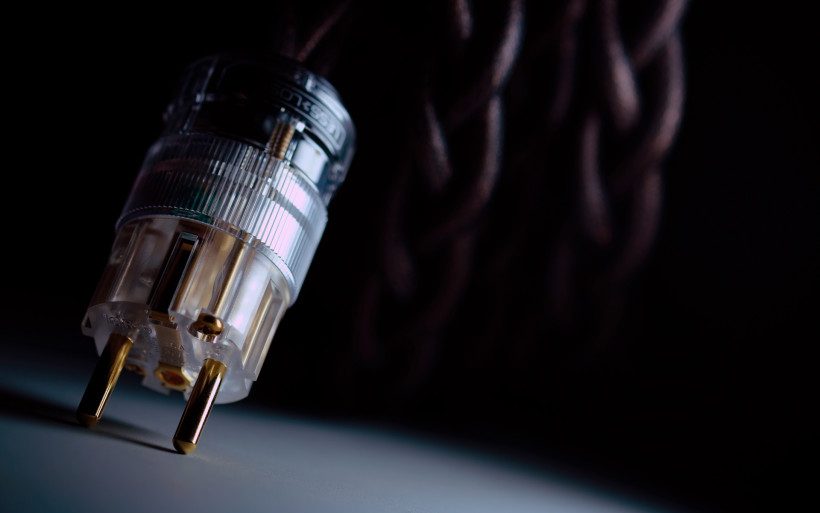 Next in line are three passive components meant to improve any audio setup in various places. Firewall Current Conditioner ($410 each) addresses noise pollution present in power and USB lines respectively yet via completely passive measures and with no caps, coils, fuses, diodes or inductors involved, whereas Bindbreaker decoupling feet ($160 each) provide extra vibration control. LessLoss also sells Firewall 64X modules ($400 each) to DIY in hardware already owned. This company is into custom jobs as well, whereas its most ambitious power related project to date sports 116 Firewall units and ten power sockets. It’s safe to say that LessLoss is not a one trick operation, whereas its latest cables are as interesting as everything else.
Next in line are three passive components meant to improve any audio setup in various places. Firewall Current Conditioner ($410 each) addresses noise pollution present in power and USB lines respectively yet via completely passive measures and with no caps, coils, fuses, diodes or inductors involved, whereas Bindbreaker decoupling feet ($160 each) provide extra vibration control. LessLoss also sells Firewall 64X modules ($400 each) to DIY in hardware already owned. This company is into custom jobs as well, whereas its most ambitious power related project to date sports 116 Firewall units and ten power sockets. It’s safe to say that LessLoss is not a one trick operation, whereas its latest cables are as interesting as everything else.
Build
All LessLoss Dynamic Filtering Power Cables (aka DFPC) were separated into three models; Original, Signature and Reference. This family was designed to be as free from noise as possible thanks to this company’s skin-filtering technology, although live lines in Signature and Reference models had their conductivity doubled and additional ground wires woven into the main braid. Each model’s price reflected its potency along this simple key: the stronger the filtering grade and additional measures were, the heavier asking followed. Then after years of service the three DFPC musketeers along with their kin meant to work in different places were all discontinued. Presumably many sleepless nights were involved, but Louis finally found a way to up his silence game and Common-mode Auto-rejecting Cable (aka C-MARC) was born. According to Louis, his C-MARC discovery outperformed, thus dethroned every other previously released leash completely and was propagated all across the Lithuanian board shortly after. Here’s where it gets really interesting: this review’s hero made the LessLoss power lineup even simpler to have it represented via only one model lighter on the wallet in comparison to the now discontinued DFPC. In order to perform a move as ballsy as pricier goods purposely cast aside, one really has to come up with something superior, otherwise what’s the point? Although C-MARC and DFPC products are somewhat similar in what they do, namely strip signal from contamination to make it quieter, Louis is confident that his latest cable family based on upper tier tech does the same job far better.
According to Louis, his C-MARC discovery outperformed, thus dethroned every other previously released leash completely and was propagated all across the Lithuanian board shortly after. Here’s where it gets really interesting: this review’s hero made the LessLoss power lineup even simpler to have it represented via only one model lighter on the wallet in comparison to the now discontinued DFPC. In order to perform a move as ballsy as pricier goods purposely cast aside, one really has to come up with something superior, otherwise what’s the point? Although C-MARC and DFPC products are somewhat similar in what they do, namely strip signal from contamination to make it quieter, Louis is confident that his latest cable family based on upper tier tech does the same job far better.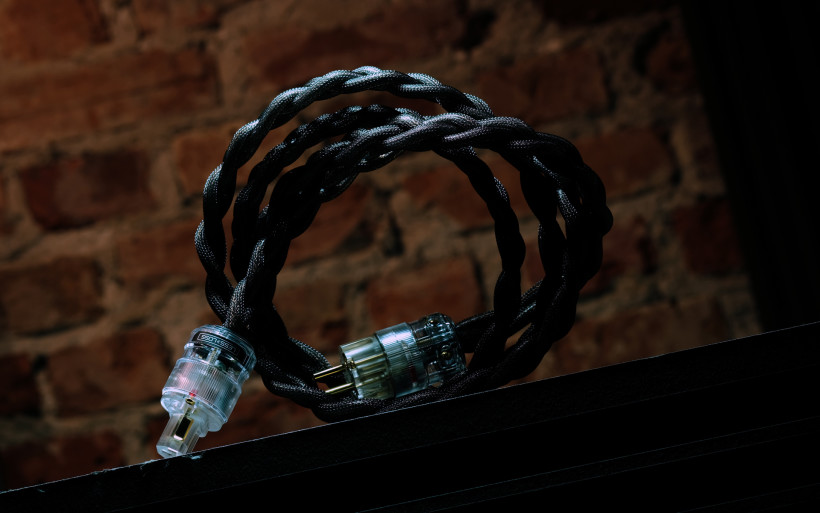 In case of C-MARC the goal was to end up with a cable quieter than DFPC and means to arrive there exploit unique geometry based on two counter-polarized coils of the same diameter and step, which then fractally replicated are C-MARC’s conductive core. The most interesting bit is how these coils are married; one turned clockwise and its equivalent twisted in the opposite direction superimpose mutually to form unique bucking-coil connection originally developed in the 1930s’. Noise induced on these balanced strands is electrically cancelled due to their opposite polarity and geometry, which translates to enormous S/N ratio in effect. The conductor itself is based on 0.125mm thin Litz wire with each of its hairs separately enameled.
In case of C-MARC the goal was to end up with a cable quieter than DFPC and means to arrive there exploit unique geometry based on two counter-polarized coils of the same diameter and step, which then fractally replicated are C-MARC’s conductive core. The most interesting bit is how these coils are married; one turned clockwise and its equivalent twisted in the opposite direction superimpose mutually to form unique bucking-coil connection originally developed in the 1930s’. Noise induced on these balanced strands is electrically cancelled due to their opposite polarity and geometry, which translates to enormous S/N ratio in effect. The conductor itself is based on 0.125mm thin Litz wire with each of its hairs separately enameled.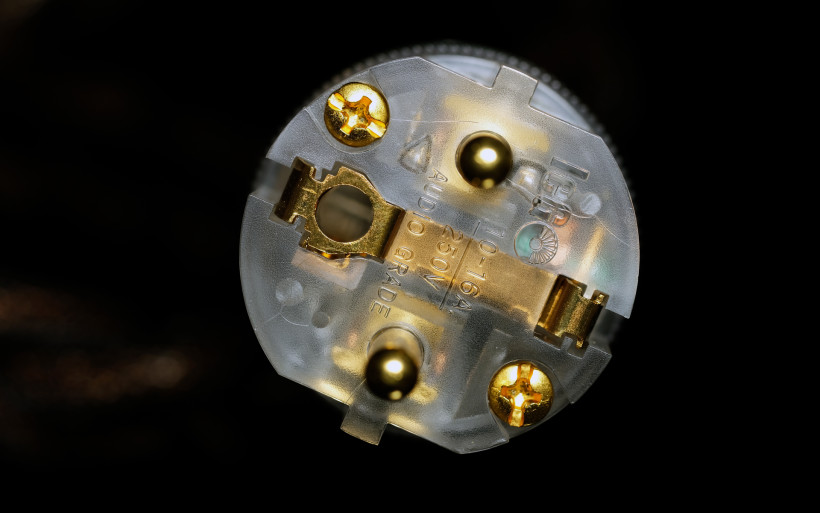 If one thinks of several insulated wires braided and DIY-ed in-between two OEM plugs as the endgame, he’d better think again. C-MARC power cable might look inconspicuous on the outside, quite regularly even, yet its inside as described on-site tells the opposite tale. C-MARC’s core made of 2×24 strands of white cotton fiber is surrounded via 16×12 strands of the main copper conductor then followed by 2x3x16 strands of gassed and mercerized black cotton. Then the copper part is replicated, coated via clear thin-walled Polyoelefin membrane and lastly all these sections are hid inside outer protective braid based on 32 Polyethylene Terepthalate monofilament yarns. The math gets us to 560 strands of material, which then needs to be multiplied by three (that’s the amount of cables used in the main C-MARC braid) and that’s how we arrive to the final number of 1680 strands in total. This complex concoction of copper, cotton and synthetic seems to be impossible to DIY at home and utmost copycat resilient, whereas something even remotely similar ordered at a factory would involve enormous financial commitment, that’s a given. Who’d even bother pursuing this scheme if desired length of said cable is available with no middle-men involved and from LessLoss directly? It doesn’t get any better than this if that’s the product you’re after.
If one thinks of several insulated wires braided and DIY-ed in-between two OEM plugs as the endgame, he’d better think again. C-MARC power cable might look inconspicuous on the outside, quite regularly even, yet its inside as described on-site tells the opposite tale. C-MARC’s core made of 2×24 strands of white cotton fiber is surrounded via 16×12 strands of the main copper conductor then followed by 2x3x16 strands of gassed and mercerized black cotton. Then the copper part is replicated, coated via clear thin-walled Polyoelefin membrane and lastly all these sections are hid inside outer protective braid based on 32 Polyethylene Terepthalate monofilament yarns. The math gets us to 560 strands of material, which then needs to be multiplied by three (that’s the amount of cables used in the main C-MARC braid) and that’s how we arrive to the final number of 1680 strands in total. This complex concoction of copper, cotton and synthetic seems to be impossible to DIY at home and utmost copycat resilient, whereas something even remotely similar ordered at a factory would involve enormous financial commitment, that’s a given. Who’d even bother pursuing this scheme if desired length of said cable is available with no middle-men involved and from LessLoss directly? It doesn’t get any better than this if that’s the product you’re after.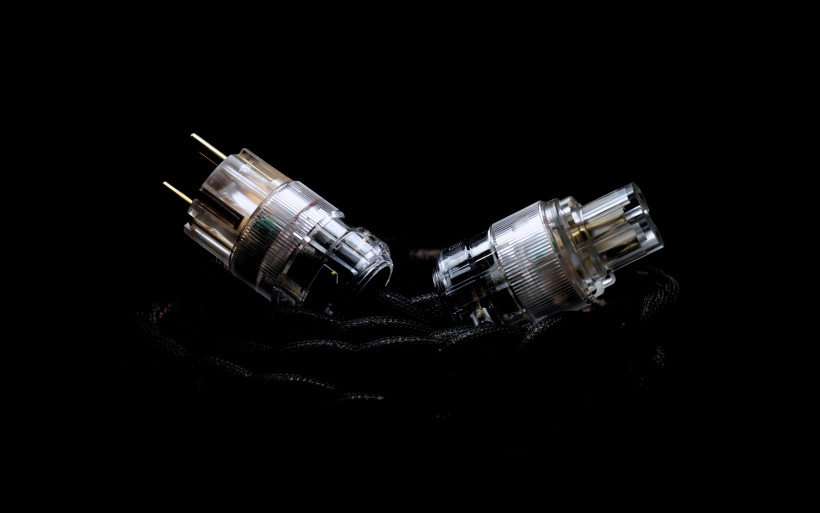 If OEM wire of skyrocketed though realistically unverifiable purity sold in bulk straight from a factory’s spools occupies one end of the spectrum, then C-MARC designed from scratch and available only from the LessLoss warehouse sits proudly at the far less crowded other. Louis doesn’t play the N-game exclusively but employs measures to net the desired effect strictly related to performance. That’s why prior to its usage, C-MARC’s copper Litz conductor is subject to 3-day long cryogenic processing and so are both plugs with their 24K gold-plated copper contacts, whereas their enclosures aren’t translucent and white just to embrace the view inside. The man explained that any colour inducing or solidifying additives impact performance, hence gorgeous red as we saw it in DFPC series was dropped and cotton exploited in C-MARC products isn’t usual as well. Subject to mercerization process to have its micro-fibers swollen and straightened out, this material is stronger, more flexible and also visually nicer than its regular kin. The last bit is irrelevant in case of this review’s main dish due to said fabric hid rather well underneath its synthetic outer jacket, yet the rest of the C-MARC flock is a different story.
If OEM wire of skyrocketed though realistically unverifiable purity sold in bulk straight from a factory’s spools occupies one end of the spectrum, then C-MARC designed from scratch and available only from the LessLoss warehouse sits proudly at the far less crowded other. Louis doesn’t play the N-game exclusively but employs measures to net the desired effect strictly related to performance. That’s why prior to its usage, C-MARC’s copper Litz conductor is subject to 3-day long cryogenic processing and so are both plugs with their 24K gold-plated copper contacts, whereas their enclosures aren’t translucent and white just to embrace the view inside. The man explained that any colour inducing or solidifying additives impact performance, hence gorgeous red as we saw it in DFPC series was dropped and cotton exploited in C-MARC products isn’t usual as well. Subject to mercerization process to have its micro-fibers swollen and straightened out, this material is stronger, more flexible and also visually nicer than its regular kin. The last bit is irrelevant in case of this review’s main dish due to said fabric hid rather well underneath its synthetic outer jacket, yet the rest of the C-MARC flock is a different story.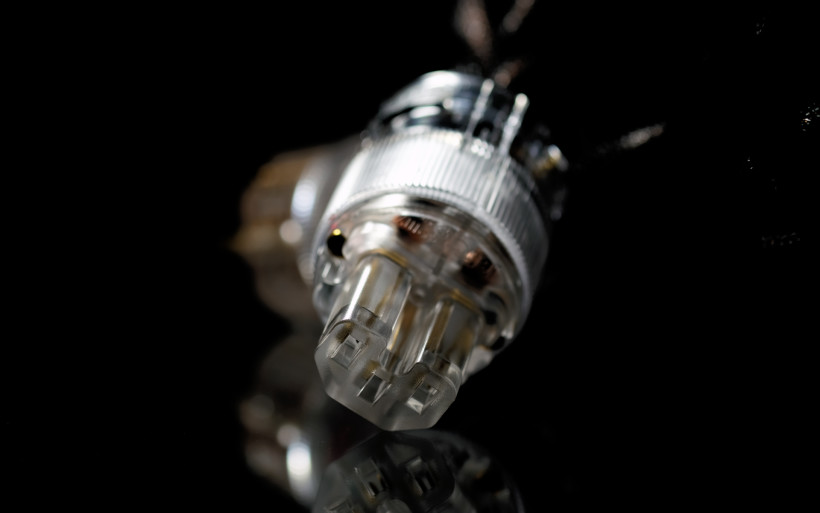 Two 2m long LessLoss loaners made very solid first impression. I’ve found them very light and perfectly usable, albeit a bit stiff. Their main 3-cables-thick braid looks and feels nice, whereas reliable connections visible through glossy translucent enclosures indicate professional assembly. Schuko pins operate as per usual, yet abnormally strong grip on IEC ends is on purpose, in order to secure tighter lock which is said to up the ante on performance count. Louis also pointed my attention towards hot leads represented via red markings positioned cleverly to be visible through translucent shells of Schuko heads. He advised to get phase polarity right without guesses and I happily obliged two short measurements later. The product can be purchased finished with several types of plugs on both ends and up to 3.5m length. Each 0.5m past the 2m mark is $94 extra and orders for two and three plus items are subject to rebates of 5% and 10% respectively. C-MARC power cable’s total conductive cross-sectional area is 13.824mm2 and its internal resistance is very low.
Two 2m long LessLoss loaners made very solid first impression. I’ve found them very light and perfectly usable, albeit a bit stiff. Their main 3-cables-thick braid looks and feels nice, whereas reliable connections visible through glossy translucent enclosures indicate professional assembly. Schuko pins operate as per usual, yet abnormally strong grip on IEC ends is on purpose, in order to secure tighter lock which is said to up the ante on performance count. Louis also pointed my attention towards hot leads represented via red markings positioned cleverly to be visible through translucent shells of Schuko heads. He advised to get phase polarity right without guesses and I happily obliged two short measurements later. The product can be purchased finished with several types of plugs on both ends and up to 3.5m length. Each 0.5m past the 2m mark is $94 extra and orders for two and three plus items are subject to rebates of 5% and 10% respectively. C-MARC power cable’s total conductive cross-sectional area is 13.824mm2 and its internal resistance is very low.
Sound
In order to review LessLoss C-MARC power cables, the usual suspects were used. My trusty Asus UX305LA laptop fed LampizatOr Pacific DAC (KR Audio T-100 DHTs + KR Audio 5U4G Ltd. Ed.), which then passed signal to either Kinki Studio EX-M1 or Trilogy 925 integrated machines and these alternately fed Boenicke W8 floorstanders. Fronted via Gigawatt’s PF-2 power strip and LC-2 MK2 leash, both Lithuanian cords powered my DAC and one of said amps. Additionally the British iFi audio iGalvanic3.0 + iUSB3.0 team did its usual magic in-between my transport and source. This review’s heroes were stacked against two Audiomica Laboratory Ness Excellence power cables with Amber modifications. The latter specimens have been on duty at my place for more than a year and I got to know them more than well. Prior to any evaluation, both Lithuanians were constantly in use for a bit more than 12 days, which netted around 300 hours of burn-in time in total. All power cables had their polarity in check, were used with the same products and plugged into the same sockets of my power strip.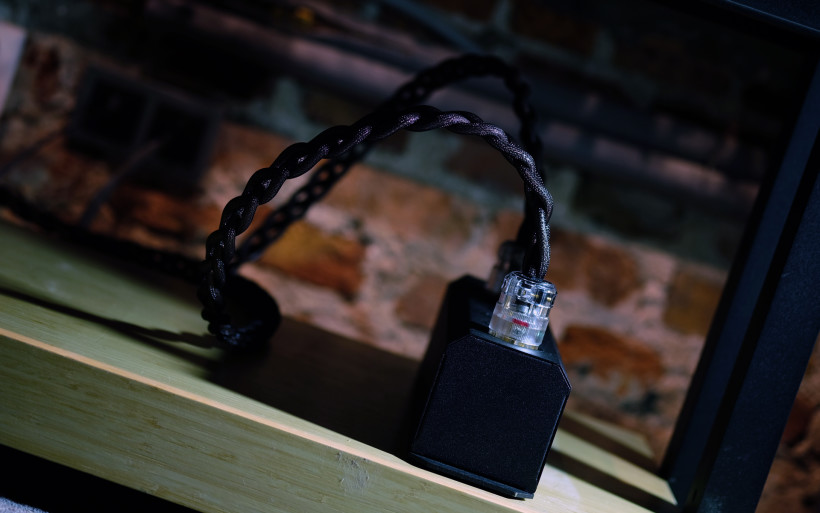 The C-MARC power cable on-site subsection informs us that this one says ‘aye’ to quiet background, increased resolution, neutral timbre and focus, accuracy, dynamics and transients, whereas ‘nay’ is given to compromised agility, listening fatigue, strong personal input, bloated imaging, harshness, brittleness and artificiality. Just the facts ma’am, additionally sprinkled via promisingly relaxed and natural ride. I’ve found all these descriptive measures to be safe and utmost marketing related weaponry early on. Nonetheless, my familiarity with C-MARC power cables eventually increased to a point where after a week or so the on-site propaganda morphed into a spot on product’s description instead. Expectations versus reality, eh?
The C-MARC power cable on-site subsection informs us that this one says ‘aye’ to quiet background, increased resolution, neutral timbre and focus, accuracy, dynamics and transients, whereas ‘nay’ is given to compromised agility, listening fatigue, strong personal input, bloated imaging, harshness, brittleness and artificiality. Just the facts ma’am, additionally sprinkled via promisingly relaxed and natural ride. I’ve found all these descriptive measures to be safe and utmost marketing related weaponry early on. Nonetheless, my familiarity with C-MARC power cables eventually increased to a point where after a week or so the on-site propaganda morphed into a spot on product’s description instead. Expectations versus reality, eh? Everything up above I’ll also additionally compliment with yet another important word – potency. LessLoss C-MARC power cable didn’t introduce mild or subtle changes in my setup, but surprisingly audible ones and the more I listened to music with two Lithuanian snakes on and off duty, the more obvious this effect became. My setup I consider as rather revealing, as such it never caused any evaluation related issues and previous adventures with power cords led me to think that, although these items can’t be labeled as major meta changers, are meaningful nonetheless. And having said this, my reference cords’ I’ve found audible the same story is with LessLoss C-MARC. But the latter introduced changes of even higher magnitude, revealed itself to be very well-seasoned and the best one I’ve had a chance to know to date.
Everything up above I’ll also additionally compliment with yet another important word – potency. LessLoss C-MARC power cable didn’t introduce mild or subtle changes in my setup, but surprisingly audible ones and the more I listened to music with two Lithuanian snakes on and off duty, the more obvious this effect became. My setup I consider as rather revealing, as such it never caused any evaluation related issues and previous adventures with power cords led me to think that, although these items can’t be labeled as major meta changers, are meaningful nonetheless. And having said this, my reference cords’ I’ve found audible the same story is with LessLoss C-MARC. But the latter introduced changes of even higher magnitude, revealed itself to be very well-seasoned and the best one I’ve had a chance to know to date.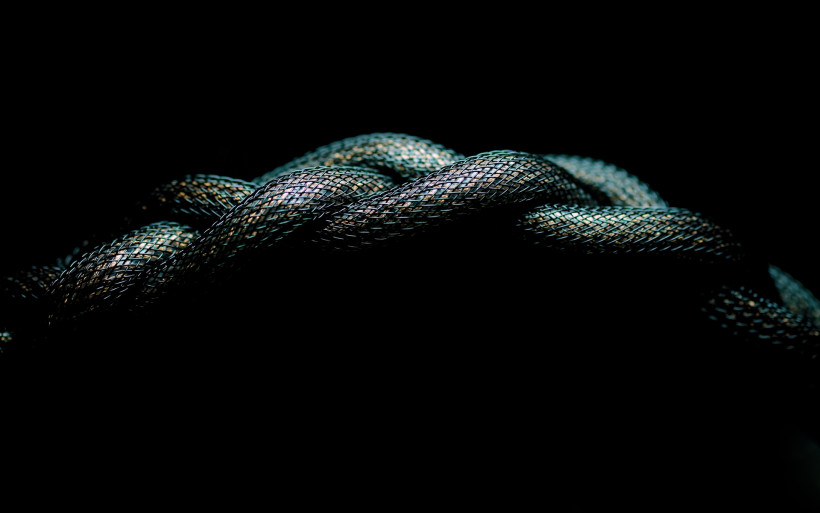 Amber modded Audiomica Laboratory Ness Excellence power cables were designed to work within a very specific circle occupied by valve amps and transmission line loaded full-rangers of high efficiency. That’s why the whole Excellence loom sports plainly gutsy attitude. This family’s goal was to introduce extra heft to speakers it was meant to work with in the first place, kudos to Łukasz Mika for crafting such a series on purpose as it takes a degree of know-how to deliver outcome exactly like so. All things considered, it came as no big surprise that C-MARC’s approach proved to be vastly different.
Amber modded Audiomica Laboratory Ness Excellence power cables were designed to work within a very specific circle occupied by valve amps and transmission line loaded full-rangers of high efficiency. That’s why the whole Excellence loom sports plainly gutsy attitude. This family’s goal was to introduce extra heft to speakers it was meant to work with in the first place, kudos to Łukasz Mika for crafting such a series on purpose as it takes a degree of know-how to deliver outcome exactly like so. All things considered, it came as no big surprise that C-MARC’s approach proved to be vastly different.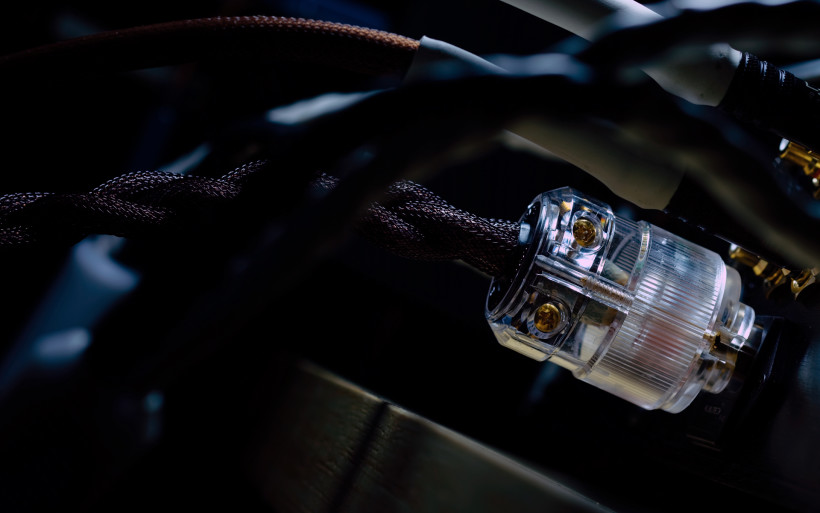 In comparison to Polish power snakes, those created by Louis and his staff provided less oomph, more fitness. This single change not only showed me two radically different characters of both models, but also I’ve found it significant enough to map Mr Motek’s work as suitable for more hardware combinations. Boldness and roundness my reference power cords introduce is always sensible, whereas their Lithuanian opponents showcase far clearer what electronics they’re hooked to is all about. Put shortly, LessLoss C-MARC painted things as they were with no extra additives and from purely journalistic perspective this virtue was of utmost value.
In comparison to Polish power snakes, those created by Louis and his staff provided less oomph, more fitness. This single change not only showed me two radically different characters of both models, but also I’ve found it significant enough to map Mr Motek’s work as suitable for more hardware combinations. Boldness and roundness my reference power cords introduce is always sensible, whereas their Lithuanian opponents showcase far clearer what electronics they’re hooked to is all about. Put shortly, LessLoss C-MARC painted things as they were with no extra additives and from purely journalistic perspective this virtue was of utmost value. 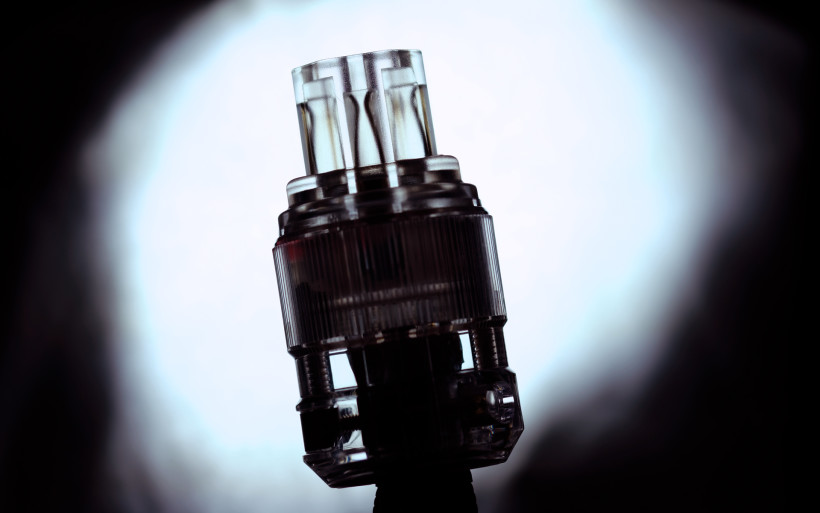 The description above already paints fairly understandable and straghtforward picture, but LessLoss C-MARC turned out to be far more complex. After several days of rather lengthy listening sessions and with all available hardware artillery involved, yours truly fully agrees that this product is very silent indeed. In order to be this resolving, grain free and smooth at the same time it simply has to be. More potent than its Polish rivals on detail retrieval count, the Lithuanian duo also served the upstairs with longer decay, surprisingly also more weight and – when needed – upped delicacy as well. C-MARC power cables proved to be very much capable of organic yet well-differentiated delivery.
The description above already paints fairly understandable and straghtforward picture, but LessLoss C-MARC turned out to be far more complex. After several days of rather lengthy listening sessions and with all available hardware artillery involved, yours truly fully agrees that this product is very silent indeed. In order to be this resolving, grain free and smooth at the same time it simply has to be. More potent than its Polish rivals on detail retrieval count, the Lithuanian duo also served the upstairs with longer decay, surprisingly also more weight and – when needed – upped delicacy as well. C-MARC power cables proved to be very much capable of organic yet well-differentiated delivery.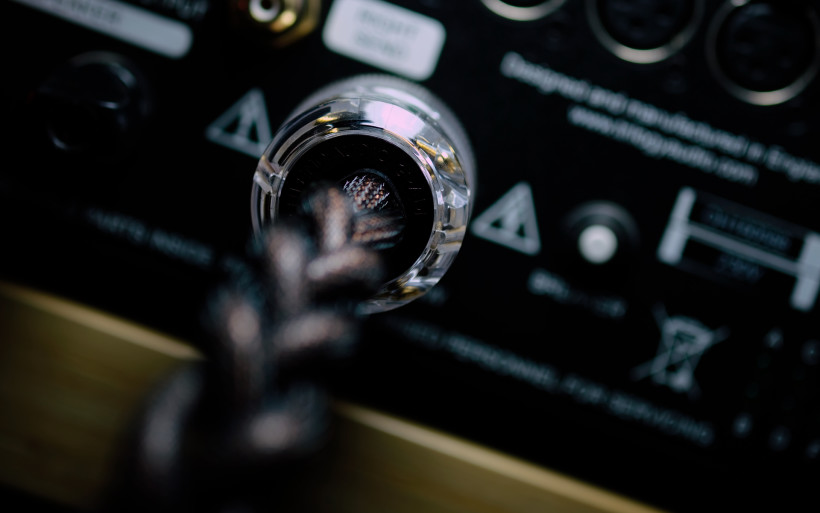 With the Lithuanians on the job, high FR served as forward and shiny could and oftentimes morphed easily into something far subtler and calmer mere seconds later. This particular and rarely heard virtue showcased as clearly I’ve found very impressive. Not a hint of itchiness, excessive spark or metallic tint this writing’s heroes sported and said feature stretched all the way down throughout all audible range too. LessLoss C-MARC provided very relaxed experience indeed and was mapped as not tense or nervous at all, yet didn’t dilute the message. Due to its inherent posh and calm attitude, badly recorded music it delivered slightly stripped from stiffness and harshness and obviously wasn’t as rounded and jolly as its Polish opponents. But with C-MARC all auditioned repertoire followed in the usual vein nonetheless, two Lithuanians didn’t transform it into something it wasn’t originally but took a bit of edge off.
With the Lithuanians on the job, high FR served as forward and shiny could and oftentimes morphed easily into something far subtler and calmer mere seconds later. This particular and rarely heard virtue showcased as clearly I’ve found very impressive. Not a hint of itchiness, excessive spark or metallic tint this writing’s heroes sported and said feature stretched all the way down throughout all audible range too. LessLoss C-MARC provided very relaxed experience indeed and was mapped as not tense or nervous at all, yet didn’t dilute the message. Due to its inherent posh and calm attitude, badly recorded music it delivered slightly stripped from stiffness and harshness and obviously wasn’t as rounded and jolly as its Polish opponents. But with C-MARC all auditioned repertoire followed in the usual vein nonetheless, two Lithuanians didn’t transform it into something it wasn’t originally but took a bit of edge off.  The C-MARC team elevated the experience unobtrusively and safely, yet didn’t play the prettify game at all and was far from sounding dull as well. In its case clarity, transparency and the so-called black background marched hand in hand with spot on textural richness and saturation, no hints of under- or overload on these counts were heard to net very real and truthful outcome each and every time. Beefier and more picturesque Audiomica Ness Excellence cables purposely altered the reality, which I’ve found very useful with quite the number of electronics in the past. But revealing potential Lithuanians introduced and in general high quality measures to pull this off were the clear signs of upper tier performance and seasoning.
The C-MARC team elevated the experience unobtrusively and safely, yet didn’t play the prettify game at all and was far from sounding dull as well. In its case clarity, transparency and the so-called black background marched hand in hand with spot on textural richness and saturation, no hints of under- or overload on these counts were heard to net very real and truthful outcome each and every time. Beefier and more picturesque Audiomica Ness Excellence cables purposely altered the reality, which I’ve found very useful with quite the number of electronics in the past. But revealing potential Lithuanians introduced and in general high quality measures to pull this off were the clear signs of upper tier performance and seasoning. Differences described in paragraph above also stretched to soundstaging. Polish duo painted picture with more upfront and directly served first row and also sensibly somewhat locked in-between both speakers, whereas C-MARC snakes provided wider and deeper perspective, injected more air and – again – acted subtler; less bluntly and more sensitively. But the biggest difference of them all was in how vocals were sculpted. The former team diluted them slightly and made a bit bigger, whereas Lithuanians delivered more precise outlines filled with clearer pigments to net more accurate and understandable effect. Perfectly contoured, superbly isolated shapes covered with humane texturing and suspended on multi-layered, organic and dark space is what I heard and was very much impressed by that.
Differences described in paragraph above also stretched to soundstaging. Polish duo painted picture with more upfront and directly served first row and also sensibly somewhat locked in-between both speakers, whereas C-MARC snakes provided wider and deeper perspective, injected more air and – again – acted subtler; less bluntly and more sensitively. But the biggest difference of them all was in how vocals were sculpted. The former team diluted them slightly and made a bit bigger, whereas Lithuanians delivered more precise outlines filled with clearer pigments to net more accurate and understandable effect. Perfectly contoured, superbly isolated shapes covered with humane texturing and suspended on multi-layered, organic and dark space is what I heard and was very much impressed by that.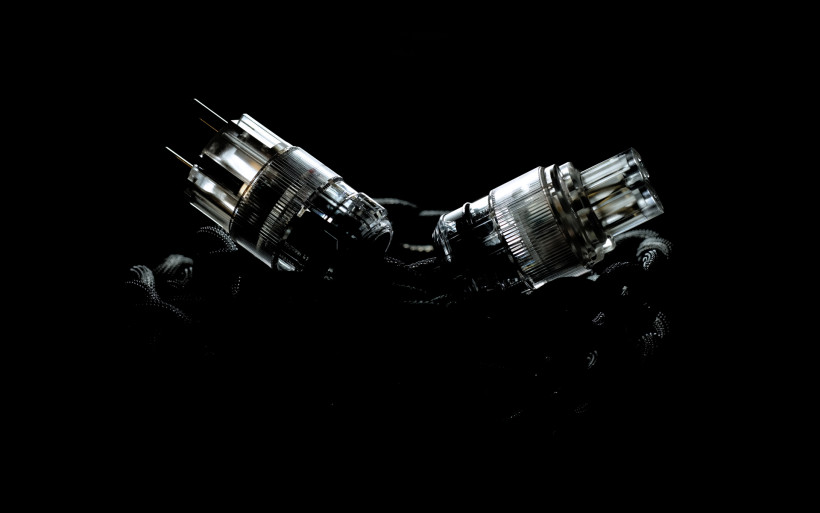 The above-mentioned blend of virtues served all at once in very easygoing and utmost relaxed fashion is the ideal LessLoss C-MARC description, yet refinement and finely applied balancing act have to be added to the mix to make it complete. The Lithuanian duo revealed itself as neutral, accurate, calm, exceptionally easygoing indeed and free from any overcooked aspects. Music with this team on duty flowed utmost pleasantly, feedback about equipment and repertoire used was generous and that’s what I can safely call as a true win-win scenario. As far as hardware matching went, I enjoyed Kinki Studio EX-M1’s pleasant roar obviously introduced by Audiomica Laboratory’s Excellence family, but everything else C-MARC did a notch better, whereas Trilogy 925 unequivocally favoured the latter duo and so did my DAC.
The above-mentioned blend of virtues served all at once in very easygoing and utmost relaxed fashion is the ideal LessLoss C-MARC description, yet refinement and finely applied balancing act have to be added to the mix to make it complete. The Lithuanian duo revealed itself as neutral, accurate, calm, exceptionally easygoing indeed and free from any overcooked aspects. Music with this team on duty flowed utmost pleasantly, feedback about equipment and repertoire used was generous and that’s what I can safely call as a true win-win scenario. As far as hardware matching went, I enjoyed Kinki Studio EX-M1’s pleasant roar obviously introduced by Audiomica Laboratory’s Excellence family, but everything else C-MARC did a notch better, whereas Trilogy 925 unequivocally favoured the latter duo and so did my DAC.
Summary
Just as any other cables related affair would, this one also had its origin mildly entertaining, though it quickly morphed into utmost interesting one. Rest assured that a material this long-winded honestly wasn’t scheduled. But the more I investigated Louis Motek’s work, the clearer it became that his operation and its latest C-MARC tech are not ordinary at all.
Past the highly involving Lithuanian experience it’s very clear to me now that LessLoss is well-respected in the industry not by mere accident or luck. Louis and his crew arrived there by following their own path, finding a clever and unique way to up their own game and delivering products such as this review’s heroes. These seemingly don’t do much on their own but let hardware and music to speak for themselves instead, hence it might take a while to fully grasp the very much refined Lithuanian message. But once LessLoss C-MARC’s revealing, balanced and sophisticated character free from any signs of juvenile flashiness finally arrives, joy and appreciation will follow accordingly.
Although expensive still, LessLoss C-MARC power cables are sanely priced in general classification. In their case one pays not for off-the-shelf OEM scheme with customized stickers slapped on both of its ends but nicely executed proprietary solution free from randomness and aimed to work in very specific fashion. This finely seasoned, versatile and brilliant Lithuanian effort is the best one of its kind I’ve heard thus far, hence the award below. Chapeau bas to the LessLoss team, I look forward to what’s next in the pipeline and ’till next time!
Associated equipment:
- Amplifiers: Trilogy 925, Kinki Audio EX-M1
- Sources: LampizatOr Pacific (KR Audio T-100 + KR Audio 5U4G Ltd. Ed.)
- Speakers: Boenicke Audio W8
- Transports: Asus UX305LA
- Speaker cables: Forza AudioWorks Noir Concept, Audiomica Laboratory Celes Excellence, Luna Gris
- Interconnects: Forza AudioWorks Noir, Audiomica Laboratory Erys Excellence
- Power components: Gigawatt PF-2 + Gigawatt LC-2 MK2 + Forza AudioWorks Noir Concept/Audiomica Laboratory Ness Excellence
- Rack: Franc Audio Accesories Wood Block Rack
- Music: NativeDSD
Retail prices of reviewed components in EU (excl. tax):
- LessLoss C-MARC power cable 2/2.5/3/3.5 meters: $1’148/$1’242/$1’336/$1’430
Manufacturer: LessLoss



